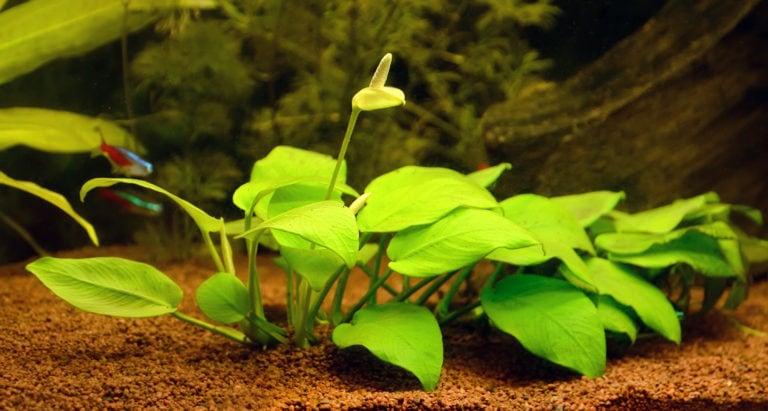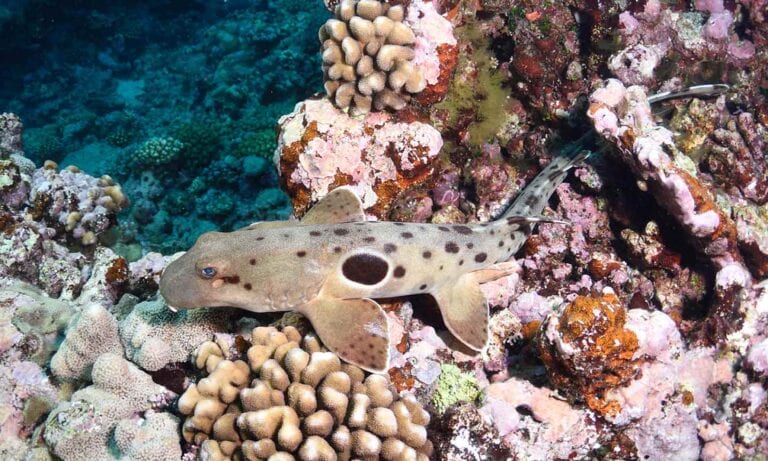The exact definition of a riparium is left to your imagination. Often, hobbyists describe them as planted tanks recreating wetlands or the shoreline of brooks and streams where marginal plants grow. Marginal plants include true aquatics growing emersed and terrestrial vegetation tolerant of marsh conditions.
I enjoy including small islands in some of my ripariums which further expands the scope of these unusual aquatic displays. Ripariums can be covered with a glass top or open to the air with no top at all. Many ripariums are only partially filled with water but on the other hand, some hobbyists choose to completely fill their open-top tanks. It just depends on the theme desired and the type of fish and plants you wish to keep.
There are considerable advantages but also a few disadvantages to consider prior to creating an open top or covered riparium.
Riparium Advantages:
- They are great for those new to plant keeping. Growing aquatic plants is challenging. Ripariums allow hobbyists’ an opportunity for success with easy-to-grow aquatic plants and an enormous amount of easily grown terrestrial plants.
- Aquatic plants growing emersed enjoy an unlimited supply of atmospheric CO2. As a result, many aquatic plants can display large, colorful leaves that don’t develop in an aquarium. The leaves and stems can extend well beyond the water’s surface. It is not unusual for many aquatic plants to flower when growing emersed. Some aquatic plant flowers are simply striking.
- Covered ripariums use less water. This is enticing especially during a drought or where water is expensive.
- Aquariums are normally intended to be viewed from the side. But an open top riparium can also offer a spectacular top view. In fact, it is what is growing out of the tank that often creates the “wow” effect.
Riparium Disadvantages:
- Open top ripariums experience faster evaporation than a covered riparium.
- Covered ripariums limit your choices for growing taller plants.
- Plants exposed to the air are subjected to pests such as aphids, scale, spider mites and other vermin. High humidity or frequent misting helps ward off those pests.
- The plants require frequent pruning and depending on the species, root division. Plant growth will be much faster than in a traditional (low-tech) aquarium. This is because the plants growing emersed are exposed to higher levels of carbon dioxide. Rapid growth might seem like an advantage rather than a disadvantage. Usually it is, but excessive growth might make you a victim of your success if the plants are not regularly pruned. Taller plants can create a ‘canopy’ that creates excessive shade and in some cases, totally block light from lower growing plant species.
Tank
Almost any aquarium will work for a riparium. Even a 10-gallon fish aquarium is sufficient but ideally, the tank will have a large ‘foot print’ meaning it is long and wide to present a more natural appearance.
Aponogeton flowering in a riparium. Photo by Stephen G. Noble
Substrate
Use regular aquarium gravel or plant-specific substrate. Often, ripariums are featured with decorative river rocks as a substrate but only do this if you are willing to carefully vacuum the tank every few days. Uneaten food and debris are easily trapped in the large crevices between the rocks and will pollute the tank if not removed. Consider using only a few river rocks as accent points rather than lining the entire bottom of the tank with them.
Filtration
Canister filtration is ideal for ripariums. Select the filter based upon the number of gallons of water the tank can hold rather than the number of gallons of water you plan to have in the tank. You might initially have a half-full tank but later decide to raise the water level or convert to a traditional aquarium. Obtaining a filter for ‘all occasions’ allows maximum flexibility. Internal filtration is another option. A power head connected to a properly sized sponge filter is an excellent choice.
Lighting
Ripariums, like paludariums rarely need specialized lighting. Use a standard fluorescent or LED light over the tank. Open top aquariums need pendant lights or a set-up like my goldfish tank (pictured) where the lights are positioned above the tank on thick glass sheets. Select your plants based upon the capabilities of your lighting.
Heating
Select a submersible heater fitted with a heating element guard. The guard will prevent the hot element from coming into contact with plants and aquatic life. If canister filtration is used, an external to the aquarium, ‘in-line heater’ can be connected to the return hose which keeps heating completely away from plants and animals.
Plants
Three types of easily grown plants can be used individually or combined in ripariums. I list them as aquatic, marginal and pond but in reality, many of our aquarium plants are propagated growing emersed. Some such as Java Fern will grow completely out of the water but must have nearly 100% humidity to thrive.
- Aquatic plants include Java Fern, Java Moss, Amazon Swords, Anubias and Cryptocoryne. Water sprite can be grown rooted or floating.
- Marginal plants include Umbrella papyrus, Crimson ivy (Hemigraphis colorata), Peace lily (Spathyphyllum), Dracaena and Syngonium podophyllum. It should be noted that many aquatic plants such as Amazon Swords (Echinodorus) are also found growing as marginals in the wild.
- Pond plants include tropical water lilies such as Nymphaea stellata and lotus.
Planting
Aquatic and pond plants can be rooted in the substrate at the bottom of the tank in the normal fashion. It is the marginal and aquatic plants (growing in high humidity) that require creativity. Try attaching Java Fern and Anubias to logs protruding from the water. Use cotton thread to hold them in place. Over time, they will attach themselves via micro roots. Java Fern and Anubias growing emersed need to remain moist at all times A covered tank to contain the humidity works well. Marginal plants such as Peace Lilies and Dracaena can be rooted in the substrate so long as their leaves are not submerged. But, they really do not have to be rooted in any substrate to thrive. I have several of each of these plants that have lived for many years attached to logs or floating with only their roots in the water.
Ripariums offer the most versatility of all aquariums and will be an interesting addition to your fish room or home. Enjoy your planted tank!
Posted By: Chewy Editorial
Featured Image: By Stephen G. Noble
Share:









